The Troubles, also called Northern Ireland conflict, violent sectarian conflict from about 1968 to 1998 in Northern Irelandbetween the overwhelmingly Protestantunionists (loyalists), who desired the province to remain part of the United Kingdom, and the overwhelmingly Roman Catholic nationalists (republicans), who wanted Northern Ireland to become part of the republic of Ireland. The other major players in the conflict were the British army, Royal Ulster Constabulary (RUC), and Ulster Defence Regiment (UDR; from 1992 called the Royal Irish Regiment), and their avowed purpose was to play a peacekeeping role, most prominently between the nationalist Irish Republican Army(IRA), which viewed the conflict as a guerrilla war for national independence, and the unionist paramilitary forces, which characterized the IRA’s aggression as terrorism. Marked by street fighting, sensational bombings, sniper attacks, roadblocks, and internment without trial, the confrontation had the characteristics of a civil war, notwithstanding its textbook categorization as a “low-intensity conflict.” Some 3,600 people were killed and more than 30,000 more were wounded before a peaceful solution, which involved the governments of both the United Kingdom and Ireland, was effectively reached in 1998, leading to a power-sharing arrangement in the Northern Ireland Assembly at Stormont.
Deep origins
The story of the Troubles is inextricably entwined with the history of Ireland as whole and, as such, can be seen as stemming from the first British incursion on the island, the Anglo-Norman invasion of the late 12th century, which left a wave of settlers whose descendants became known as the “Old English.” Thereafter, for nearly eight centuries, England and then Great Britain as a whole would dominate affairs in Ireland. Colonizing British landlords widely displaced Irish landholders. The most successful of these “plantations” began taking hold in the early 17th century in Ulster, the northernmost of Ireland’s four traditional provinces, previously a centre of rebellion, where the planters included English and Scottish tenants as well as British landlords. Because of the plantation of Ulster, as Irish history unfolded—with the struggle for the emancipation of the island’s Catholic majority under the supremacy of the Protestant ascendancy, along with the Irish nationalist pursuit of Home Rule and then independence after the island’s formal union with Great Britain in 1801—Ulster developed as a region where the Protestant settlers outnumbered the indigenousIrish. Unlike earlier English settlers, most of the 17th-century English and Scottish settlers and their descendants did not assimilate with the Irish. Instead, they held on tightly to British identity and remained steadfastly loyal to the British crown.
The formation of Northern Ireland, Catholic grievances, and the leadership of Terence O’Neill
Of the nine modern counties that constituted Ulster in the early 20th century, four—Antrim, Down, Armagh, and Londonderry (Derry)—had significant Protestant loyalist majorities; two—Fermanagh and Tyrone—had small Catholic nationalist majorities; and three—Donegal, Cavan, and Monaghan—had significant Catholic nationalist majorities. In 1920, during the Irish War of Independence (1919–21), the British Parliament, responding largely to the wishes of Ulster loyalists, enacted the Government of Ireland Act , which divided the island into two self-governing areas with devolved Home Rule-like powers. What would come to be known as Northern Ireland was formed by Ulster’s four majority loyalist counties along with Fermanagh and Tyrone. Donegal, Cavan, and Monaghan were combined with the island’s remaining 23 counties to form southern Ireland. The Anglo-Irish Treaty that ended the War of Independence then created the Irish Free State in the south, giving it dominion status within the British Empire. It also allowed Northern Ireland the option of remaining outside of the Free State, which it unsurprisingly chose to do.
Thus, in 1922 Northern Ireland began functioning as a self-governing region of the United Kingdom. Two-thirds of its population (about one million people) was Protestant and about one-third (roughly 500,000 people) was Catholic. Well before partition, Northern Ireland, particularly Belfast, had attracted economic migrants from elsewhere in Ireland seeking employment in its flourishing linen-making and shipbuilding industries. The best jobs had gone to Protestants, but the humming local economy still provided work for Catholics. Over and above the long-standing dominance of Northern Ireland politics that resulted for the Ulster Unionist Party (UUP) by virtue of the Protestants’ sheer numerical advantage, loyalist control of local politics was ensured by the gerrymandering of electoral districts that concentrated and minimized Catholic representation. Moreover, by restricting the franchise to ratepayers (the taxpaying heads of households) and their spouses, representation was further limited for Catholic households, which tended to be larger (and more likely to include unemployed adult children) than their Protestant counterparts. Those who paid rates for more than one residence (more likely to be Protestants) were granted an additional vote for each ward in which they held property (up to six votes). Catholics argued that they were discriminated against when it came to the allocation of public housing, appointments to public service jobs, and government investment in neighbourhoods. They were also more likely to be the subjects of police harassment by the almost exclusively Protestant RUC and Ulster Special Constabulary (B Specials).
The divide between Catholics and Protestants in Northern Ireland had little to do with theological differences but instead was grounded in culture and politics. Neither Irish history nor the Irish language was taught in schools in Northern Ireland, it was illegal to fly the flag of the Irish republic, and from 1956 to 1974 Sinn Féin, the party of Irish republicanism, also was banned in Northern Ireland. Catholics by and large identified as Irish and sought the incorporation of Northern Ireland into the Irish state. The great bulk of Protestants saw themselves as British and feared that they would lose their culture and privilege if Northern Ireland were subsumed by the republic. They expressed their partisan solidarity through involvement with Protestant unionist fraternal organizations such as the Orange Order, which found its inspiration in the victory of King William III (William of Orange) at the Battle of the Boyne in 1690 over his deposed Catholic predecessor, James II, whose siege of the Protestant community of Londonderry had earlier been broken by William. Despite these tensions, for 40 or so years after partition the status of unionist-dominated Northern Ireland was relatively stable.
Recognizing that any attempt to reinvigorate Northern Ireland’s declining industrial economy in the early 1960s would also need to address the province’s percolatingpolitical and social tensions, the newly elected prime minister of Northern Ireland, Terence O’Neill, not only reached out to the nationalist community but also, in early 1965, exchanged visits with Irish Taoiseach (Prime Minister) Seán Lemass—a radical step, given that the republic’s constitution included an assertion of sovereignty over the whole island. Nevertheless, O’Neill’s efforts were seen as inadequate by nationalists and as too conciliatory by loyalists, including the Rev. Ian Paisley, who became one of the most vehement and influential representatives of unionist reaction.
Civil rights activism, the Battle of Bogside, and the arrival of the British army
Contrary to the policies of UUP governments that disadvantaged Catholics, the Education Act that the Northern Ireland Parliament passed into law in 1947 increased educational opportunities for all citizens of the province. As a result, the generation of well-educated Catholics who came of age in the 1960s had new expectations for more equitable treatment. At a time when political activism was on the rise in Europe—from the events of May 1968 in France to the Prague Spring—and when the American civil rights movement was making great strides, Catholic activists in Northern Ireland such as John Humeand Bernadette Devlin came together to form civil rightsgroups such as the Northern Ireland Civil Rights Association (NICRA).
Although more than one violently disrupted political march has been pointed to as the starting point of the Troubles, it can be argued that the catalyzing event occurred on October 5, 1968, in Derry, where a march had been organized by the NICRA to protest discrimination and gerrymandering. The march was banned when unionists announced that they would be staging a counterdemonstration, but the NICRA decided to carry out their protest anyway. Rioting then erupted after the RUC violently suppressed the marchers with batons and a water cannon.
Similarly inflammatory were the events surrounding a march held by loyalists in Londonderry on August 12, 1969. Two days of rioting that became known as the Battle of Bogside (after the Catholic area in which the confrontation occurred) stemmed from the escalating clash between nationalists and the RUC, which was acting as a buffer between loyalist marchers and Catholic residents of the area. Rioting in support of the nationalists then erupted in Belfast and elsewhere, and the British army was dispatched to restore calm. Thereafter, violent confrontation only escalated, and the Troubles (a name that neither characterized the nature of the conflict nor assigned blame for it to one side or the other) had clearly begun.
The emergence of the Provisional IRA and the loyalist paramilitaries
Initially, the nationalists welcomed the British army as protectors and as a balance for the Protestant-leaning RUC. In time, however, the army would be viewed by nationalists as another version of the enemy, especially after its aggressive efforts to disarm republican paramilitaries. In the process, the Irish Republican Army (IRA) became the defender of the nationalist cause. From its base in Ireland(which had formally left the Commonwealth in 1949), the IRA had mounted an ineffectual guerrilla effort in support of Northern Ireland’s nationalists from 1956 to 1962, but, as the 1960s progressed, the IRA became less concerned with affairs in the north than with advancing a Marxist political agenda. As a result, a splinter group, the Provisional Irish Republican Army (Provos), which was prepared to use force to bring about unification, emerged as the champion of Northern Ireland’s nationalists. (The Official IRA would conduct operations in support of the republicans in Northern Ireland until undertaking a cease-fire in 1972, after which it effectively ceded the title of the IRA in the north to the Provos.) Believing that their fight was a continuation of the Irish War of Independence, the Provos adopted the tactics of guerrilla warfare, financed partly by members of the Irish diaspora in the United States and later supplied with arms and munitions by the government of Libyan strongman Muammar al-Qaddafi. Unionists also took up arms, swelling the numbers of loyalist paramilitary organizations, most notably the Ulster Volunteer Force (UVF) and Ulster Defence Association UDA).
Internment, “peace walls,” and “Bloody Sunday”
In an attempt to address nationalist grievances, electoral boundaries were redrawn more fairly, efforts were made to rectify discrimination in housing and public employment, and the B Specials were decommissioned. At the same time, the government of Northern Ireland responded to the growing unrest by introducing increasingly stringent security measures, including internment (detention without trial). The overwhelming majority of those arrested, however, were nationalists.
As the 1970s progressed, rioting became more common in Belfast and Derry, bombings of public places (by both loyalists and republicans) increased, and both sides of the conflict perpetrated violent, deadly atrocities. Barbed wire laid by British soldiers to separate the sectarian communitiesevolved into brick and steel “peace walls,” some of which stood 45 feet (14 metres) high, segregating loyalist and republican enclaves, most famously the Falls Road Catholic community and the Shankill Protestant community of Belfast.
On January 30, 1972, the conflict reached a new level of intensity when British paratroopers fired on Catholic civil rights demonstrators in Londonderry, killing 13 and injuring 14 others (one of whom later died). The incident, which became known as “Bloody Sunday,” contributed to a spike in Provos recruitment and would remain controversial for decades, hinging on the question of which side fired first. In 2010 the Saville Report , the final pronouncement of a British government inquiry into the event, concluded that none of the victims had posed a threat to the troops and that their shooting had been unjustified. British Prime Minister David Cameron responded to the report by issuing a landmark apology for the shooting:
There is no point in trying to soften or equivocate what is in this report. It is clear from the tribunal’s authoritative conclusions that the events of Bloody Sunday were in no way justified….What happened should never, ever have happened….Some members of our armed forces acted wrongly. The government is ultimately responsible for the conduct of the armed forces and for that, on behalf of the government, indeed, on behalf of our country, I am deeply sorry.
In all, more than 480 people were killed as a result of the conflict in Northern Ireland in 1972, which proved to be the deadliest single year in the Troubles. That total included more than 100 fatalities for the British army, as the IRA escalated its onslaught. On July 21, “Bloody Friday,” nine people were killed and scores were injured when some two dozen bombs were detonated by the Provos in Belfast. Earlier, in March, frustrated with the Northern Ireland government’s failure to calm the situation, the British government suspended the Northern Ireland Parliament and reinstituted direct rule by Westminster.
Beginning in the mid-1970s, the IRA shifted the emphasis of its “Long War” from direct engagements with British troops to smaller-scale secretive operations, including the bombing of cities in Britain—a change of tactics the British military described as a shift from “insurgency” to “terrorism.” Similarly, the loyalist groups began setting off bombs in Ireland. Meanwhile, paramilitary violence at mid-decade (1974–76) resulted in the civilian deaths of some 370 Catholics and 88 Protestants.
The Sunningdale Agreement, hunger strikes, Bobby Sands, and the Brighton bombing
A glimmer of hope was offered by the Sunningdale Agreement , named for the English city in which it was negotiated in 1973. That agreement led to the creation of a new Northern Ireland Assembly, with proportional representation for all parties, and to the establishment of a Council of Ireland, which was to provide a role for Ireland in the affairs of Northern Ireland. Frustrated by the diminution of their political power and furious at the participation of the republic, loyalists scuttled the power-sharing plan with a general strike that brought the province to a halt in May 1974 and eventually forced a return to direct rule, which remained in place for some 25 years.
For the remainder of the decade, violence ebbed and flowed, cease-fires lingered and lapsed, and tit-for-tat bombings and assassinations continued, including the high-profile killing at sea in August 1979 of Lord Mountbatten, a relative of both Queen Elizabeth II and Prince Philip. In 1976 the opening of the specially designed Maze prison brought with it a shift in the treatment of IRA inmates from that of prisoners of war to that of common criminals. Seeking a return to their Special Category Status, the prisoners struck back, first staging the “blanket protest,” in which they refused to put on prison uniforms and instead wore only blankets, and then, in 1978, the “dirty protest,” in which inmates smeared the walls of their cells with excrement. The government of recently elected Prime Minister Margaret Thatcher refused to buckle, even in the face of hunger strikes in 1980–81 that led to the deaths of 10 prisoners, including Bobby Sands, who had won a seat in the British Parliament while incarcerated and fasting.
Sands’s election helped convince Sinn Féin, then operating as the political wing of the IRA, that the struggle for unification should be pursued at the ballot box as well as with the Armalite rifle. In June 1983 Sinn Féin leader Gerry Adams won a seat in Parliament representing West Belfast, though he refused to take it to avoid taking the compulsory oath of loyalty to the British queen.
The Anglo-Irish Agreement and Downing Street Declaration
In October 1984 an IRA bomb attack on the Conservative Party Conference in Brighton, England, took five lives and threatened that of Thatcher. Though she remained steadfast in the face of this attack, it was the “Iron Lady” who in November 1985 joined Irish Taoiseach Garret FitzGerald in signing the Anglo-Irish Agreement, under which both countries guaranteed that any change in the status of Northern Ireland would come about only with the consent of the majority of the people of Northern Ireland. The accordalso established the Intergovernmental Conference, which gave Ireland a consultative role in the political and security affairs of Northern Ireland for the first time. Finally, the agreement stipulated that power would be devolved back upon the government of Northern Ireland only if unionists and nationalists participated in power sharing.
The loyalists’ vehement opposition to the agreement included the resignation of all 15 unionist members of the House of Commons and a ramping up of violence. In the meantime, IRA bombings in London made headlines, and the reach of the British security forces extended to the killing of three Provos in Gibraltar. Behind the scenes, however, negotiations were underway. In 1993 British Prime Minister John Major and Irish Taoiseach Albert Reynolds issued the so-called Downing Street Declaration , which established a framework for all-party peace talks. A cease-fire declared by the Provos in 1994 and joined by the principal loyalist paramilitary groups fell apart in 1996 because Sinn Féin, which had replaced the more moderate Social Democratic and Labour Party (SDLP) as the leading nationalist party, had been excluded from peace talks because of the IRA’s continuing bombing campaign. Nevertheless, the unionists were at the table, prepared to consider a solution that included the participation of the republic of Ireland. After the IRA resumed its cease-fire in 1997, Sinn Féin was welcomed back to the talks, which now included the British and Irish governments, the SDLP, the Alliance Party of Northern Ireland, the UUP, and the Ulster Democratic Party, among others, though not the Paisley-led DUP, which was protesting the inclusion of Sinn Féin.
The Good Friday Agreement, the Omagh bombing, peace, and power sharing
Those talks, mediated by former U.S. senator George Mitchell, led to the Good Friday Agreement (Belfast Agreement), reached April 10, 1998. That landmark accordprovided for the creation of a power-sharing Northern Ireland Assembly, established an institutional arrangement for cross-border cooperation between the governments of Ireland and Northern Ireland on a range of issues, and lay the groundwork for continued consultation between the British and Irish governments. On May 22 Ireland and Northern Ireland held a joint referendum on the agreement, which was approved by 94 percent of those who voted in the republic and 71 percent of those voting in Northern Ireland, where Catholic approval of the accord (96 percent) was much higher than Protestant assent (52 per cent). Nonetheless, it was an IRA splinter group, the Real Irish Republican Army, which most dramatically violated the spirit of the agreement, with a bombing in Omagh in August that took 29 lives.
Elections for the new Assembly were held in June, but the IRA’s failure to decommission delayed the formation of the power-sharing Northern Ireland Executive until December 1999, when the IRA promised to fulfill its obligation to disarm. That month the republic of Ireland modified its constitution, removing its territorial claims to the whole of the island, and the United Kingdom yielded direct rule of Northern Ireland. Ostensibly the Troubles had come to end, but, though Northern Ireland began its most tranquil era in a generation, the peace was fragile. Sectarian antagonism persisted, the process of decommissioning was slow on both sides, and the rolling out of the new institutions was fitful, resulting in suspensions of devolution and the reimposition of direct rule.
In July 2005, however, the IRA announced that it had ordered all its units to “dump arms,” would henceforth pursue its goals only through peaceful means, and would work with international inspectors “to verifiably put its arms beyond use.” At a press conference in September, a spokesman for the Independent International Commission on Decommissioning stated, “We are satisfied that the arms decommissioned represent the totality of the IRA’s arsenal.” Decommissioning by unionist paramilitaries and other republican groups followed..














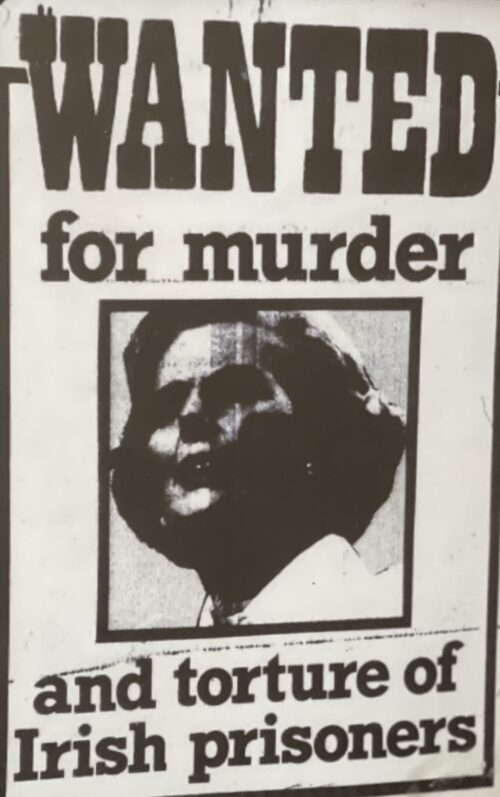
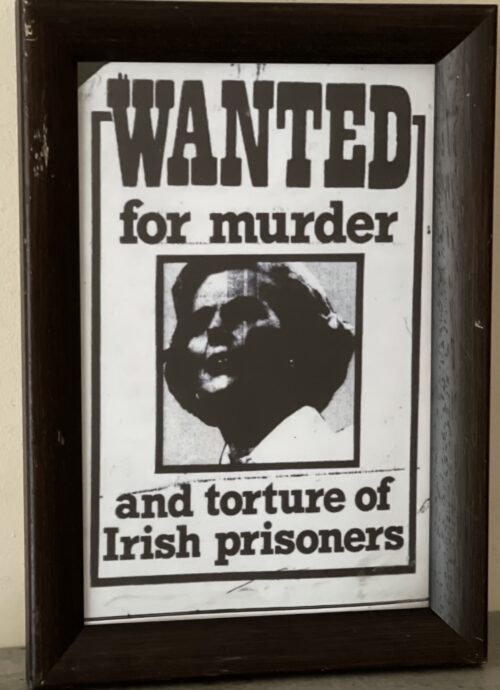














































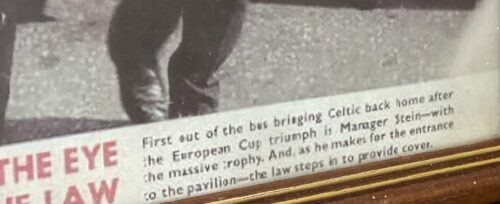











 47cm x 35cm
The old Smithwicks brewery is on the site of a Franciscan abbey, where monks had brewed ale since the 14th century, and ruins of the original abbey still remain on its grounds. The old brewery has since been renovated and now hosts "The Smithwick's Experience Kilkenny" visitor attraction and centre.At the time of its closure, it was Ireland's oldest operating brewery.
John Smithwick was an orphan who had settled in Kilkenny. Shortly after his arrival, Smithwick went into the brewing business with Richard Cole on a piece of land that Cole had leased from the Duke of Ormond in 1705. Five years later, John Smithwick became the owner of the land. The brewery stayed small, servicing a loyal local following while John Smithwick diversified.
Following John Smithwick's death, the brewery temporarily fell out of family hands. John Smithwick's great grandson, Edmond bought the brewery land back freehold and worked to reshape its future. Edmond concentrated on discovering new markets and successfully building export trade. Drinkers in England, Scotland and Wales developed a taste for Smithwick's brews and output increased fivefold.
As a result of substantial contributions made to St Mary's Cathedral, Edmond became great friends with Irish liberal Daniel O'Connell, who later became godfather to one of his sons. Edmond Smithwick became well known and respected by the people of Kilkenny who elected him town mayor four times.
In 1800, export sales began to fall and the brewing industry encountered difficulty. To combat this, the Smithwick family increased production in their maltings, began selling mineral water and delivered butter with the ale from the back of their drays.By 1900, output was at an all-time low and the then owner James Smithwick was advised by auditors to shut the doors of the brewery. Instead, James reduced the range of beers they produced and set out to find new markets. He secured military contracts and soon after saw output increase again. James' son, Walter, took control in 1930 and steered the brewery to success through the hardships of both World War II and increasingly challenging weather conditions.By January 1950, Smithwick's was exporting ale to Boston.Smithwick's was purchased from Walter Smithwick in 1965 by Guinness and is now, along with Guinness, part of
47cm x 35cm
The old Smithwicks brewery is on the site of a Franciscan abbey, where monks had brewed ale since the 14th century, and ruins of the original abbey still remain on its grounds. The old brewery has since been renovated and now hosts "The Smithwick's Experience Kilkenny" visitor attraction and centre.At the time of its closure, it was Ireland's oldest operating brewery.
John Smithwick was an orphan who had settled in Kilkenny. Shortly after his arrival, Smithwick went into the brewing business with Richard Cole on a piece of land that Cole had leased from the Duke of Ormond in 1705. Five years later, John Smithwick became the owner of the land. The brewery stayed small, servicing a loyal local following while John Smithwick diversified.
Following John Smithwick's death, the brewery temporarily fell out of family hands. John Smithwick's great grandson, Edmond bought the brewery land back freehold and worked to reshape its future. Edmond concentrated on discovering new markets and successfully building export trade. Drinkers in England, Scotland and Wales developed a taste for Smithwick's brews and output increased fivefold.
As a result of substantial contributions made to St Mary's Cathedral, Edmond became great friends with Irish liberal Daniel O'Connell, who later became godfather to one of his sons. Edmond Smithwick became well known and respected by the people of Kilkenny who elected him town mayor four times.
In 1800, export sales began to fall and the brewing industry encountered difficulty. To combat this, the Smithwick family increased production in their maltings, began selling mineral water and delivered butter with the ale from the back of their drays.By 1900, output was at an all-time low and the then owner James Smithwick was advised by auditors to shut the doors of the brewery. Instead, James reduced the range of beers they produced and set out to find new markets. He secured military contracts and soon after saw output increase again. James' son, Walter, took control in 1930 and steered the brewery to success through the hardships of both World War II and increasingly challenging weather conditions.By January 1950, Smithwick's was exporting ale to Boston.Smithwick's was purchased from Walter Smithwick in 1965 by Guinness and is now, along with Guinness, part of 














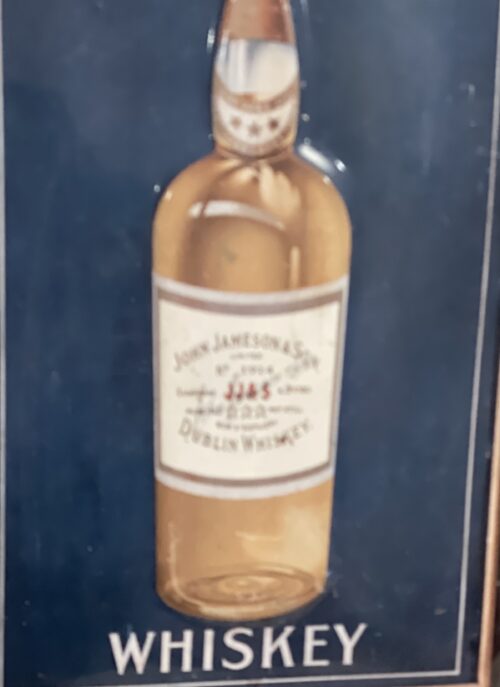
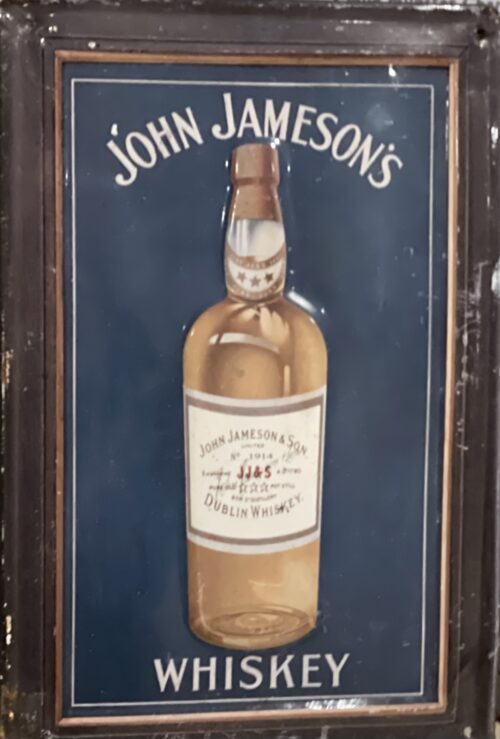









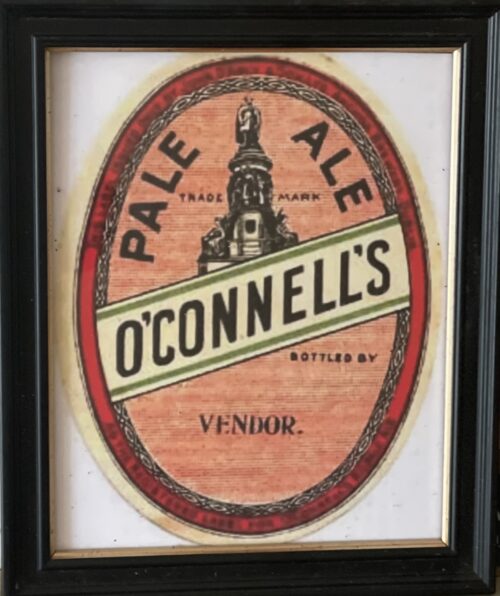
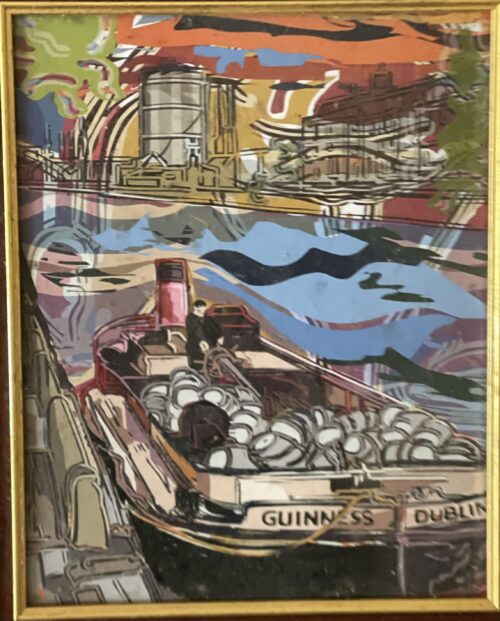
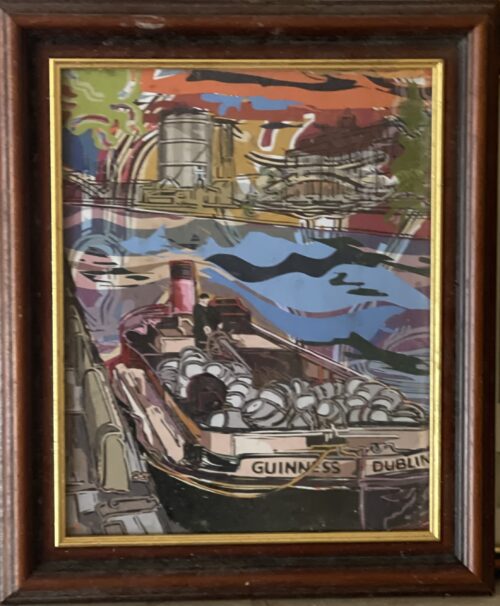









 Limerick 5-2 Dublin 2-6
D Clohessy 4-0, M Mackey 1-1, J O’Connell 0-1
Limerick 5-2 Dublin 2-6
D Clohessy 4-0, M Mackey 1-1, J O’Connell 0-1





 Tom Moloughney, Jimmy Doyle, and Kieran Carey relax in the dressing room after Tipperary’s victory over Dublin in the 1961 All-Ireland final, a success that was to be repeated the following year. Picture from ‘The GAA — A People’s History’
Tom Moloughney, Jimmy Doyle, and Kieran Carey relax in the dressing room after Tipperary’s victory over Dublin in the 1961 All-Ireland final, a success that was to be repeated the following year. Picture from ‘The GAA — A People’s History’